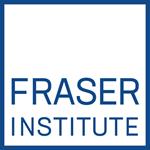
Fraser Institute News Release: Six out of 10 provinces increased per-student spending on public schools, even after adjusting for inflation
/EIN News/ -- VANCOUVER, British Columbia, Aug. 22, 2024 (GLOBE NEWSWIRE) -- Despite common misperceptions, per-student spending on public schools increased in six of the 10 provinces over a 10-year period (after adjusting for inflation), finds a new study published by the Fraser Institute, an independent, non-partisan Canadian public policy think-tank.
“Contrary to what we often hear, spending on public schools is on the rise in most provinces across Canada,” said Michael Zwaagstra, senior fellow at the Fraser Institute and co-author of Education Spending in Public Schools in Canada, 2024 Edition.
From 2012/13 to 2021/22 (the latest year of available data), after adjusting for inflation and enrolment changes, Quebec experienced the largest per-student spending increase on public schools (33.7 per cent) followed by Prince Edward Island (21.6 per cent), Nova Scotia (12.3 per cent), British Columbia (6.7 per cent), New Brunswick (1.5 per cent) and Ontario (0.5 per cent).
As a result, Quebec is now the highest per-student spender in Canada, Saskatchewan dropped from the highest per-student spender to seventh highest, and Alberta went from third-highest to the lowest spender. Meanwhile, B.C. recorded the fourth-highest growth in per student spending (again, after adjusting for inflation) but remains the eighth-highest spender in Canada.
During the same 10-year period, Saskatchewan (-14.9 per cent), Alberta (-17.2 per cent), Newfoundland and Labrador (-9.8 per cent) and Manitoba (-0.2 per cent) experienced a decline in per-student (inflation-adjusted) spending on public schools.
In every province, compensation (salaries, wages, fringe benefits and pensions) comprised most of the spending growth.
The available data from Statistics Canada does not differentiate between permanent ongoing spending and temporary COVID-related spending in 2020 and 2021, which may affect spending levels and growth in both of those years.
“It’s important for parents and policymakers to have accurate information about spending on public schools where the majority of kids are educated,” Zwaagstra said.
MEDIA CONTACT:
Michael Zwaagstra, Senior Fellow, Fraser Institute
To arrange media interviews or for more information, please contact:
Mark Hasiuk, Senior Communications Specialist, Fraser Institute
(604) 688-0221 ext. 517
mark.hasiuk@fraserinstitute.org
Follow the Fraser Institute on Twitter and Facebook
The Fraser Institute is an independent Canadian public policy research and educational organization with offices in Vancouver, Calgary, Toronto, and Montreal and ties to a global network of think-tanks in 87 countries. Its mission is to improve the quality of life for Canadians, their families and future generations by studying, measuring and broadly communicating the effects of government policies, entrepreneurship and choice on their well-being. To protect the Institute’s independence, it does not accept grants from governments or contracts for research. Visit www.fraserinstitute.org.

Distribution channels: Consumer Goods ...
Legal Disclaimer:
EIN Presswire provides this news content "as is" without warranty of any kind. We do not accept any responsibility or liability for the accuracy, content, images, videos, licenses, completeness, legality, or reliability of the information contained in this article. If you have any complaints or copyright issues related to this article, kindly contact the author above.
Submit your press release


